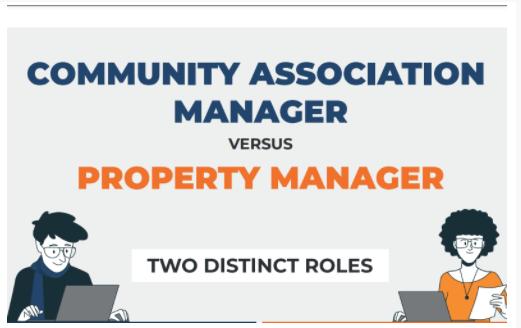Can you believe that 25% of the US population now live in community association? This means that boards and managers need to work harder to improve HOA & Condo communication for all residents.
Why Does HOA & Condo Communication Matter?
People choose to live in condos for various reasons, but one thing most owners have in common is that they’re anxious to rid themselves of many of the worries that come with owning a single-family home. They prefer to pay dues every month to an HOA that’s responsible for things like exterior maintenance and upkeep, landscaping, and common areas like pools and spas.
There are a number of moving parts when it comes to condo life. There is the elected Board of Directors, the community residents, owners, and renters; as well as the property manager. Communication is key to preventing and solving issues that are bound to arise. Let’s look at how each of these groups should think about HOA communication.
What are the parts in HOA & Condo Communication?
There are three main stakeholders in all HOAs & Condos: the board, the manager & residents.
Board of Directors
It shouldn’t come as a big surprise that in many condo communities, just a small percentage of owners involve themselves in making decisions that can have a significant effect on everyone who lives there. Some HOAs have a tough time getting a quorum for annual elections.
This means communication is even more important for residents. It is the board’s responsibility to follow your HOA’s rules and to keep residents informed about what’s going on.
A sound strategy to communicate with community residents is to produce a newsletter that’s distributed either electronically, via an HOA communication tool, or in hard copy. In addition, if the community has a website or mobile app, that’s a great vehicle through which to communicate time-sensitive news. Unfortunately, unless a big issue erupts, perhaps changing exterior paint colors or raising monthly dues, it might seem like the Board’s communication efforts fall on deaf ears, but you must keep sending out notices. It is being noticed, even if it doesn’t feel like it.
Community Residents
Those who have stepped up to serve on the Board aren’t the only residents who should be concerned with communication. Everyone who lives in the community has a stake in its upkeep, safety, and more. So it falls on the shoulders of all residents to communicate problems they see or concerns they would like reviewed. Read the emails that the board send and check your condo’s website.
In many condo communities, there is an owner vs. renter mentality, with many owners —especially those who live onsite full time — taking a dim view toward renters who may not abide by community rules. Communication comes into play in several ways: owners who rent their units should make sure their tenants are aware of the condo rules and regulations, and onsite owners who have issues with renters should communicate their displeasure.
Community Association Manager
A good community association management company can make a big difference in how pleasant life is in a condo community. You can tell if a firm is doing a good job based on its communication skills. It should provide multiple ways for residents to get in touch, they should respond promptly to requests. They need to be proactive in providing information about the community, as well as provide professional customer service steeped in patience, understanding, and transparency.
It’s especially important for the manager to communicate clearly with the HOA Board. Deadlines should be communicated in writing, and detailed records of all communication. This includes at board meetings, as well as with individual board members, and to all condo owners and renters. They must be kept and must reflect the professionalism of the company.
Never doubt the importance of condo communication, especially when it comes to managing condo values, which is always at the heart of any activities by the Board, the residents, and the property manager.
How to Improve your HOA and Condo Communication?
These 6 tips will improve the way that you communicate with your entire community association.
1. See what your resources are
When you think about communication, consider the resources you have or should have to make information available. You must be able to deliver all relevant information to residents without difficulty.
Remember that using only one channel can be a problem: not everyone is in the habit of using email, for example. The more flexible and versatile the communication channels are, the more comprehensive it will be.
2. Consider using social media
If you’re thinking of involving and engaging the community, using social media can be a good alternative. The tools are interesting and can be very efficient if managed correctly. A lot of communities use Facebook groups or Next Door to talk to each other about what’s going on.
The problem with Facebook is that information isn’t always shown in chronological order, so it can get confusing. It can also be difficult for the board to keep up and control the group.
3. Always keep contact information up to date
In order to keep the entire community connected, it’s important that everyone keeps their contact information up to date.
Ensure an internal data update policy whenever necessary, so that communication can be done efficiently. You should have all residents’ phone numbers, email addresses, and their emergency contact. This is especially important before hurrican season, as you need to be prepared for an emergency.
4. Have committees trained to help
In order to improve communication within the HOA, committees should be able to let residents know what they do, what they’re up to currently, and how to join.
For example, if you have a committee that organizes social events, these people need to communicate with the rest of the community about those events. This could include emails, website updates, leaflets, posters, and publications on social media. It is important that committee members schedule events in advance to ensure efficient communication.
5. Create newsletters
Although we are living in the internet age, a printed newsletter can be a good alternative. It is important to remember that not everyone in the HOA can or is willing to use the Internet. If you are working in a rural community, with older readers, having a paper newsletter may be more interesting.
So keep printed information on the notice board, and newsletters. You can also ask people if they would like to receive information by mail if they don’t use the internet.
6. Don’t forget the digital
Not everyone uses emails, but it’s still a very useful channel of communication. Create and send newsletters regularly and send them out to all residents.
Having a few communication channels is important so that the highest number of residents possible can be engaged in the goings-on in their community. Condo software is useful in this sense as it can include more than one way to stay in touch with residents.
Conclusion to HOA and Condo Communication?
HOA & Condo communication is essential to ensure the safety, transparency, and tranquility of all those involved. Understanding the needs of your community helps you to understand how you should be in contact with owners and renters in your HOA or condo.
Neigbrs by Vinteum gives you the freedom to communicate with residents by email, text messages, and smart calls. Start your 14-day free trial now!







